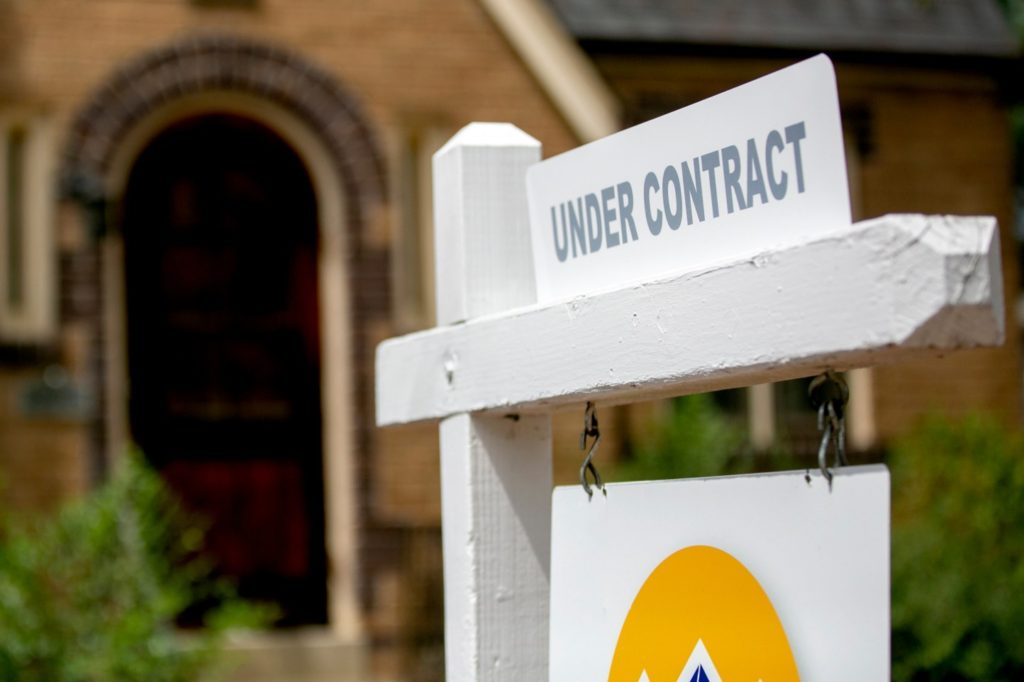Everything You Need to Know About Appraisal Gaps
By Allison Chiaramonte
9/17/2021
With mortgage interest rates remaining low compared to historic averages, many people are financing their home purchases – a move that makes a lot of financial sense.

Whenever you buy a property and intend to take out a mortgage on it, whether it be a house, condo or cooperative, all mortgage lenders will require an appraisal, which is an unbiased estimate of the true or fair market value of the property. All lenders order an appraisal during the mortgage loan process so that there is an objective way to assess the home’s market value, and ensure the amount of money requested by the borrower is appropriate.
However, getting a mortgage, or accepting an offer that is contingent on financing (many offers are), complicates a purchase transaction. It can potentially place both the buyer and seller in a unique circumstance: an appraisal gap. Many buyers and sellers are blissfully unaware of what this term means and the possible complications, and delays, it can cause for a contingent sales transaction.

Tel: 551-580-4856 | Email: F.WINNIE.S@GMAIL.COM
What Is Appraised Value and Why Are Appraisal Gaps Becoming More Common?
A property’s appraised value is based on historical comparable sales and other quantifiable factors, like its size and condition.
Nowadays, with real estate activity reverting to prepandemic levels across the country, certain housing markets are incredibly competitive and rife with bidding wars. In this type of seller’s market – where an influx of buyers is taking advantage of favorable mortgage rates and homeowners are receiving multiple offers over the asking price – a property’s contract price will often be higher than its appraised value.
So, how does the “appraisal gap” math work?
Theoretically, if you were buying a home for $100,000, and the deal was contingent on you getting a mortgage for 80% of the price, you’d need to put down $20,000 and take out a mortgage for $80,000.
But if the home’s appraised value ends up being lower – at, say, $80,000 – then the bank will only give you 80% of that appraised value, which is just $64,000. That means you’d need to come up with an additional $16,000 to close the deal.
If your offer is all cash, you don’t need an appraisal. If your purchase is not contingent on financing, but you are planning to finance some of it, you will still need an appraisal. In this case, though, the appraised value has little relevance to the deal as you, the buyer, must come up with the differential monies regardless. However, in the more common “contingent on financing” purchase, both buyers and sellers need to pay close attention to how a potential appraisal gap will be addressed in the contract of sale.
If you are a buyer with an offer contingent on financing and find yourself faced with an appraisal gap, you have a few options:
- Pay the difference in cash between the appraised value and your offer (an additional $16,000 in the example above).
- Try and renegotiate a lower price with the seller.
- Walk away from the deal, as this situation is exactly what an appraisal contingency clause is for.
If you still want the home, but don’t have the liquid funds and the seller won’t budge, you can request a review of the appraisal. Alternatively, you can request a second appraisal with a new appraiser from the same bank, or apply with a different lender, as there is a chance that another appraiser will value the property higher.
While these two options can preserve the deal, they will also delay the transaction process. This could be impractical in a hot market when there are multiple offers on the table, and an impatient seller can easily pivot to the next buyer.
Typically, a purchase contract has an appraisal contingency, which is wording that says the buyer can call off the deal if a property appraises for lower than they offered. But in competitive markets, where buyers outnumber sellers, many buyers waive the appraisal contingency to sweeten their offer.
Appraisal Gap Coverage
There is one other interim legal step you can take as a buyer that could satisfy and lessen the risk for the seller, and also not leave you completely exposed to a large appraisal gap and unexpected expense: getting appraisal gap coverage.
Appraisal gap coverage is an insurance policy that is written into a contract, in which the buyers can stipulate that they will pay the potential difference between the appraised value and the contract price, up to a certain amount. From a seller’s point of view, this lowers the risk of a financing-contingent deal falling through. It guarantees an acceptable appraisal gap amount that can occur without giving the buyers a way out of the deal.
From the buyers’ point of view, it makes their offer more compelling, but also allows them to walk away if the appraisal gap is bigger than the agreed-upon amount, or what they can afford, which is clearly outlined in the contract.
While the math here is simple, many buyers and sellers forget how important it is to consider the potential impact of appraisal contingency clauses, appraisal gaps and including an appraisal gap coverage clause in their contracts, especially in a hot market. The topic can perplex even the savviest buyers and sellers, so make sure to discuss all of your options with your real estate agent, lender and real estate attorney before submitting or accepting an offer, and certainly before signing a contract.
It Took Homes 11 Days To Sell In Denver In August. That Might Be A Sign That The Market Is Slowing
By Sarah Mulholland
9/04/2021

Home sales in the Denver metro are slowing, giving some buyers a chance to jump into what has been a highly competitive market for more than a year.
In August, houses sat on the market for an average of 11 days, according to a new report from the Denver Metro Association of Realtors. That may not sound like a lot, but it’s an increase from nine days in July.
And, earlier this year, homes were routinely going into contract within three to four days of being put on the market in the metro area, which includes Boulder and Broomfield counties.
Buyers typically move slower in late summer as families settle in for a new school year, Andrew Abrams, chair of the real estate association’s trend committee and a realtor in the area, noted in the report.
“They are a bit more patient, wanting to find the right house for the ‘right’ price,” Abrams wrote.
How long it takes to sell a home depends on its price, with less expensive homes selling faster than more expensive ones. A home with a price tag that is less than $500,000, for example, might be on the market for nine days, while a home priced in the $750,000 to $1 million range might sell in 16 days.
In August, the median price for a home in Denver was $540,000, which was about the same as July. But that’s 17 percent higher than it was a year ago.
It’s too early to tell whether the recent slowdown is due to seasonal patterns or the housing market beginning to correct itself after a boom that drove double-digit price gains across much of the state and the country.

“Sellers have basked in the control seat for so long that it can be hard to set reasonable expectations,” realtor Amanda Snitker wrote in the report, advising homeowners to prepare for a slower sales process.
While sellers might not be getting multiple bids in one weekend, low interest rates and a lack of homes for sale are still fueling a tight housing market.
A record-low 3,582 homes were listed last month in metro Denver, marking a 35 percent decline from the same time in 2020, according to the report. Typically, there are about 16,000 homes for sale in August, though that number topped 31,000 homes in 2006 — a record high.
So far this year, Denver home sales have totaled more than $25.5 billion, a 25 percent jump compared to this time last year, and about five percent above sales volume in August 2019. The pandemic shifted the normal ebbs and flows of the housing market, halting sales in the spring and early summer of 2020, and pushing them into the colder months.



